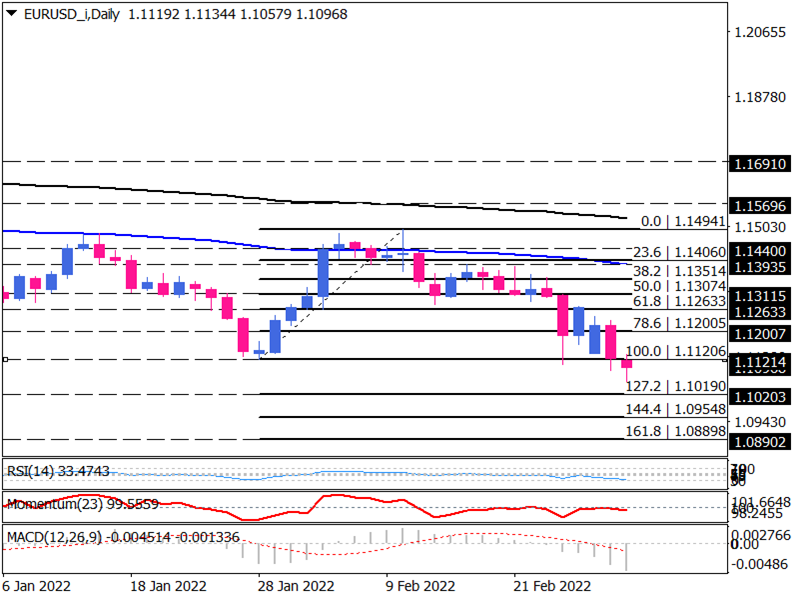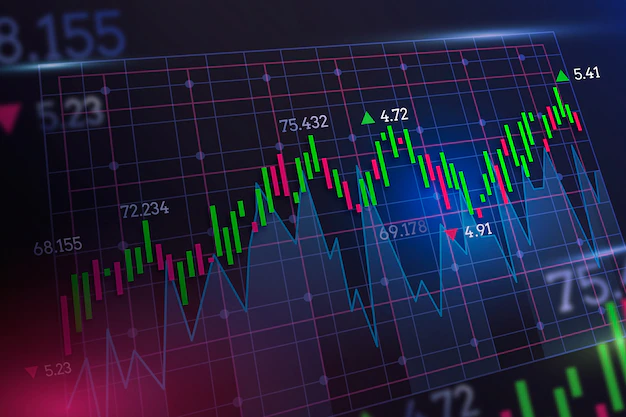
EUR/USD sellers to resume the downtrend
Euro posts fresh lows on Wednesday as the global economy and inflation are becoming increasingly concerned about the impact of a prolonged Russia-Ukraine war. Russian aggression against Ukraine continues despite harsh sanctions imposed by the west, weighing on prospects for a diplomatic solution ahead of the second round of peace talks.
ECB is expected to be less hawkish on escalating Ukraine's crisis
Additionally, investors are scaling back their bets on the European Central Bank (ECB) hiking rates amid heightened uncertainty over the outlook for the economy. ECB hikes are now priced in at less than 15 bps by December, down from 35 bps last week.
EU inflation is on the rise due to soaring energy prices
Eurostat data on Wednesday showed that inflation in the 19 euro-area countries rose to 5.8% from 5.1% in January, the highest level in 20 years, topping expectations for 5.4% and confounding the ECB's own assessment of a drop. Inflation was driven by a 32% surge in energy prices last month. Still, unprocessed food prices also climbed sharply, rising at 6.1%.
US economic outlook may support US dollar
During the day, Fed Chairman Jerome Powell will testify before the House Committee on Financial Services. Although Powell might adopt a cautious tone, investors are unlikely to see the dollar losing much ground as they already see a slim chance for a 50 basis points rate hike in March.
Technical view
On the daily chart, the single currency has been in a downtrend since June 2021, trading below both the 100 and 200-day exponential moving averages. A round of consolidation in the past couple of days regarding the escalating crisis in Ukraine prompted the pair to extend its downward trend earlier today. Having fallen below the 1.11 barrier, more technical traders reined in the market to load more sell positions.
Although the market sentiment for the euro is too fragile due to conditions on the ground, from the technical perspective, a sustained move below the 1.1105 can pave the way to resume this long downtrend, making 1.1020 available as the imminent support that lies on the 127.2% Fibonacci level. In the event that the fundamentals go against the euro, this barrier may not be able to hold. If that's the case, the sellers' attention will be drawn to the lower support at 1.0955, which aligns with the 144.4% Fibonacci level. With prevailing bearish momentum in the meantime, the 161.8% Fibonacci level at 1.0889 will be in the spotlight.
On the upside, if the selling pressure subsides and buyers successfully reject the lower prices, immediate resistance can emerge from the 1.1121 hurdle. Suppose buyers climb above this barrier. They will attempt to reach 1.12, the previous level of interest. However, until they surpass the last top at 1.1494, the downtrend remains intact on the daily chart.
Momentum oscillators suggest the dominance of sellers. RSI is moving in the selling area, momentum is falling below the 100-threshold, and the negative MACD bars are growing below the falling signal line.

Technical Analysis
Discover ideal profit opportunities for your everyday trading with the help of our in-depth technical insights comprised of facts, charts and trends.









